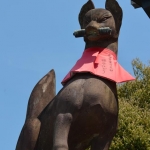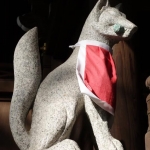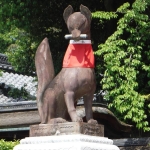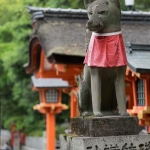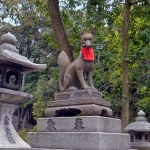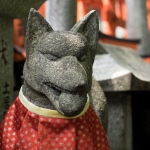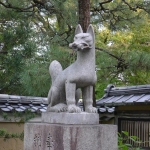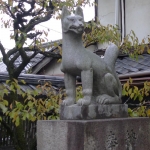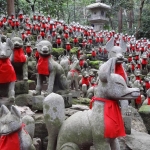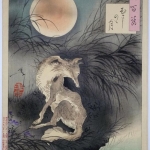Foxes – Inari
the children
pretend to be foxes…
plume grass
–Issa
In the Shinto realm, the fox deity known as kitsune is often wearing a red bib. The fox is the messenger of Oinari, the deity of food, farmers, and the rice harvest. Oinari (also written Inari) appears in both male and female form, and is generally associated with various manifestations of the Hindu goddess Dakini, who in turn is associated with Daikoku-ten (Mahakala), the latter considered the Hindu god of Five Cereals and one of Japan’s Seven Lucky Gods.
Here the symbolism is two-fold. First, rice is sacred in Japan, closely associated with fertility (the pregnant earth) and with sustaining life. Foxes must therefore be placated — otherwise it would be disastrous to the livelihood of the nation’s farmers and people. Second, the fox is associated with the concept of Kimon, a Japanese term stemming from Chinese geomancy; literally “demon gate”). Kimon generally means ominous direction, or taboo direction, and can be most accurately translated as “demon gate to the northeast,” or the “northeast place where demons gather and enter.” The fox, like the monkey, is able to ward off evil kimon, and therefore the fox, in Japan, plays the same role as the monkey in guarding the demon gate to the northeast.
For the monkey, this is easy to understand. The Japanese word for monkey (saru) is a homonym for the Japanese word 去る, which means to “dispel, punch out, push away, beat away,” and thus monkeys are thought to dispel evil spirits. But there is no similar reason for the fox’s ability to ward off evil. There are approximately 20,000 Inari (fox) shrines nationwide. Characteristics of Inari shrines are red torii (gates) protected by a pair of fox statues, one on the left and one on the right.


